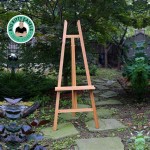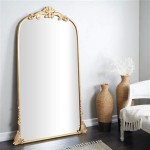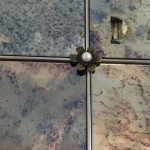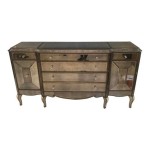Tile Mirror Frame DIY
A tiled mirror frame offers a visually striking and customizable way to enhance any mirror. This project, achievable with various skill levels, allows for creative expression through tile choice, pattern, and grout color. This article will guide readers through the process of creating a beautiful and durable tiled mirror frame.
Before embarking on this project, gathering the necessary materials is crucial. These include the mirror itself (with or without an existing frame), thin-set mortar, grout, tiles, tile spacers, a notched trowel, a grout float, a tile cutter or wet saw (depending on the tile material), a level, measuring tape, a pencil, safety glasses, gloves, and a bucket for mixing.
Choosing the right tiles significantly impacts the final aesthetic. Ceramic and porcelain tiles are popular choices due to their durability and variety. Glass tiles provide a luminous effect, while natural stone tiles offer a more rustic appearance. Consider the size and shape of the tiles in relation to the mirror's dimensions. Smaller tiles offer more intricate design possibilities but require more cutting and placement time. Larger tiles simplify the process but may limit design complexity.
Accurate measurements are essential for a successful outcome. Measure the mirror's dimensions precisely, adding the desired width of the frame to each side. This will determine the total area to be tiled. Calculate the number of tiles required based on their individual dimensions and the total area, adding extra for cuts and potential breakage.
Preparing the mirror surface is critical for proper adhesion. If the mirror has an existing frame, carefully remove it, ensuring the mirror's edges are smooth and clean. Clean the mirror surface with a glass cleaner and dry it thoroughly. For frameless mirrors, protect the reflective surface with masking tape extending slightly onto the area to be tiled. This prevents mortar and grout from staining the mirror.
Mixing the thin-set mortar according to the manufacturer's instructions is vital for optimal bonding. Generally, this involves gradually adding water to the dry mix until a smooth, paste-like consistency is achieved. Avoid making the mixture too runny, which can weaken the bond. Let the mixed mortar rest for the recommended time, known as slaking, before applying it.
Applying the thin-set mortar evenly to the mirror's edge using the notched trowel is the next step. The notches create ridges in the mortar, ensuring proper coverage and allowing for air to escape, preventing trapped air bubbles. Spread the mortar only over a manageable area, enough to place several tiles at once. This prevents the mortar from drying out before the tiles are placed.
Begin placing the tiles carefully onto the mortar bed, pressing them firmly to ensure good contact. Insert tile spacers between each tile to maintain consistent grout lines. Use a level frequently to ensure the tiles are aligned correctly. Periodically step back to assess the overall appearance and adjust as needed. Clean any excess mortar from the tile surfaces and between grout lines with a damp sponge before it dries.
Cutting tiles to fit around the mirror edges may be necessary. A tile cutter is suitable for straight cuts on ceramic or porcelain tiles. A wet saw is recommended for intricate cuts or for working with harder materials like glass or stone. Always wear safety glasses when cutting tiles to protect your eyes from flying fragments.
After the thin-set has cured for the recommended time, usually 24 hours, the grout can be applied. Mix the grout according to the manufacturer's instructions, achieving a smooth, spreadable consistency. Using a grout float, apply the grout diagonally across the tile surface, pressing firmly to fill the spaces between the tiles completely.
Remove excess grout with the edge of the grout float, then use a damp sponge to clean the tile surfaces. Rinse the sponge frequently in clean water. Avoid using excessive water, as this can wash out the grout from the joints. After the grout has partially dried, a haze may appear on the tile surface. Buff this away with a soft, dry cloth.
Sealing the grout after it has fully cured, usually after 72 hours, protects it from staining and moisture damage. Apply a grout sealer according to the manufacturer's instructions, ensuring even coverage over all grout lines. Allow the sealer to dry completely before using the mirror.
Creating a tiled mirror frame is a rewarding DIY project that adds a unique, personalized touch to any space. With careful planning, accurate measurements, and attention to detail, the result is a beautiful and durable enhancement that will be enjoyed for years to come.

How To Make A Custom Tiled Mirror The Stonybrook House

How To Make A Tiled Mirror Frame Using Salvaged Tiles

Diy Tile Mirror Whats Ur Home Story

How To Make A Custom Tiled Mirror Bathroom Mirrors Diy Tile Frame

How To Make A Custom Tiled Mirror The Stonybrook House

Diy Tile Mirror Whats Ur Home Story

How To Decorate A Mirror With Tile Sand And Sisal

How To Frame A Mirror With Tile

Diy Mosaic Tile Bathroom Mirror Centsational Style

No Grout Mosaic Tile Mirror The Diy Village








